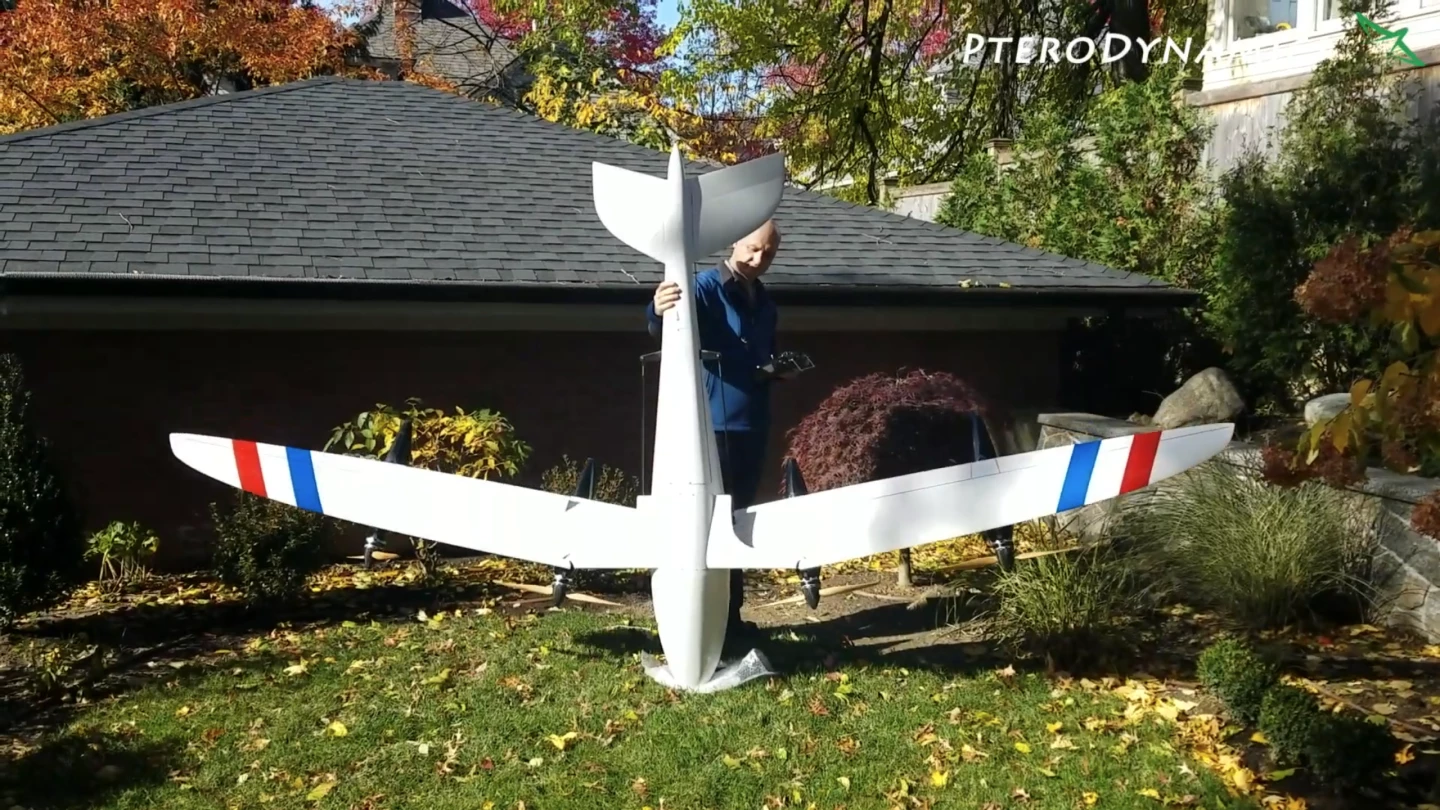Southern California's PteroDynamics has somehow escaped our attention thus far, but this company's radically different take on the electric VTOL aircraft is well worth a look, and the company claims this will be the most efficient design by far.
The Transwing is an entirely different concept to anything else in development. It's not a basic multicopter like the Volocopter 2X, a lift and cruise design like the Archer Maker or Vertical Aerospace VA-1X, or a vectored thrust configuration like the Joby S4 or Lilium Jet. It's not a typical tilt wing design either, like the one Dufour Aerospace is working on.
Instead, it uses a unique (and patented) folding wing design. Propellers on propulsion pods are distributed down the length of a very long set of wings, which are designed to fold back on dihedral pivot points a short way out along the wing, operated by control rods fixed to moving actuators on the main body. When fully folded, the wings sit vertically, parallel with the sides of the aircraft, such that the props all point skyward in a typical multicopter configuration.
The Transwing system is "aerodynamically benign" at all stages of transition between the fully folded and fully extended states, so there's no loss of control as you shift from hover onto the wings. They'll be more comfortable for passengers than multicopter designs that require the cabin to tilt in order to achieve horizontal movement.

So what's the big deal? Well, there's only so much room on a helipad. The Transwing design is incredibly compact on the ground and in VTOL operations, but once it unfolds, it's rocking a set of enormous wings for extremely efficient flight. This design has potential to scale way beyond the size most long-range eVTOL competitors can, while still being compact enough to land at an urban vertipad.
Even before you scale up, the effect is enormous; for a given wingspan, these things require about a quarter of the landing space that a fixed-wing vectored thrust or lift and cruise design, and in terms of parking them at some facility to charge, you can fit 5.5 times as many into a given space. Hell, you can get a decent size Transwing on a trailer and drive it around in a ready-to-fly configuration; that's going to be super handy when these things need to go in for maintenance at HQ.
And then there's the sheer efficiency of using a large wing; this system completely negates pretty much any disadvantage around using a broad wingspan, so PteroDynamics is free to go big. That has a pretty huge effect on the cargo-carrying efficiency of this design if the company's figures are to be taken at face value.

As PteroDynamics puts it, "Transwing aircraft have much greater range, endurance, and cargo carrying efficiency as compared to all other VTOL designs." And "given any aircraft footprint size and payload requirements, Transwing aircraft will fly several times as far as any VTOL competitor."
It doesn't have to be electric, either. The company is happy to build one with any fuel system, and if it doesn't use fast-responding electric motors, PteroDynamics will happily put variable-pitch rotors on it for super-quick thrust balancing in the hover mode. You might as well spec those for your electric version anyway; the company says they can further increase range "by a factor of at least two."
It sure looks like a promising idea. So what's the likelihood of this thing happening? PteroDynamics has built and flown scale prototype Transwing aircraft with 4.2-ft, 6.6-ft and 12.3-ft (1.3, 2 and 3.5-m) wingspans. There are plenty of flight videos on the company's YouTube channel, showing stable and smooth takeoff, soaring winged flight and well-controlled landings. They look great in the air, but there's a bit too much wing wobble on touchdown for my personal liking. I'm sure that's solvable as development progresses, but boy do those pivot points need to be strong and reliable.

The company has said it's happy to license the patented tech, but it's also planning to manufacture and even to run its own flight services, starting out with small-scale cargo drones and up-spec military and government models, with a view to eventually moving up to passenger air taxis. Representatives told FutureFlight that PteroDynamics is setting up a 9,200-sq-ft (854.7-sq-m) engineering HQ in Colorado to advance its R&D operations, and that it's also close to signoff on a deal that could see the Transwing delivered for use under an experimental license within 12 months.
Beyond that, it's hard to say where these guys are at on the path to commercialization. Little is public about their funding situation, although they've been supported to some degree by a company called Kairos Ventures since 2020. So a fascinating piece of tech, and we'll just have to wait and see what PteroDynamics can achieve with it.
To really get a sense for how neat this mechanism is, you'd best check out the video below.
Source: PteroDynamics















